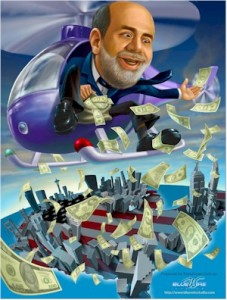Read about this here: US gave $300m arms contract to 22-year-old with criminal record
The Bush Family Business
For four generations now, the Bush family has been involved in supporting the country’s enemies (most notably the Nazi Party in Germany) and robbing the country blind.
The family was directly involved and profited from the Savings and Loan scandal of the 1980s and has participated in security fraud as well.
With this understanding as a background, the Iraq War can be viewed as their “masterpiece.”
The Bush family and its associates have stolen countless billions of dollars in the course of the war. In fact, one of their motivations for pushing the war in the first place was the opportunity for theft.
Chances are the destruction of World Trade Tower Seven, the home of crucial and now lost forever SEC and other federal law enforcement evidence and case files was carried out to cover their tracks.
Source: brasschecktv
(If you have watched this video and then you have also seen what Halliburton does.
Halliburton does not even pay taxes: Top Iraq contractor skirts US taxes offshore
And then take a look what happens at the stock market with Halliburton:
Halliburton stocks have risen about 50% since the end of January this year, in almost no time.
If you have this stock and are happy about the gain then realize that you are paying money to a corporation to cheat the American People and steal from all taxpayers.
JP Morgan, RBC Capital Markets, Merrill Lynch etc., they all say that Halliburton will outperform and yes it does, but it is you who pay for it.
Do not support Halliburton and alike companies take them down.
Sell these stocks and investment funds that support them.
Take your power back, that you have given to them, NOW. – The Infinite Unknown PS: The stock market will crash.)



 As the author of three books on mortgage finance and related derivative securities, and speaking as someone who first turned mortgages into rated securities in 1983, I’m going to let you in on an unfortunate little secret – the real subprime mortgage securitization crisis may not have even started yet. But, there is a good chance the real crisis will arrive soon.
As the author of three books on mortgage finance and related derivative securities, and speaking as someone who first turned mortgages into rated securities in 1983, I’m going to let you in on an unfortunate little secret – the real subprime mortgage securitization crisis may not have even started yet. But, there is a good chance the real crisis will arrive soon.